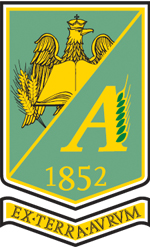Published in Scientific Papers. Series A. Agronomy, Vol. LXVI, Issue 2
Written by Gheorghe JIGAU, Tatiana CIOLACU, Boris TURCHIN, Sergiu DOBROJAN, Galina DOBROJAN
The contemporary evolution processes of arable chernozems lead to the modification of the indices of the agrogen layer settlement state materialized in the change of the ratio between the mass and the volume of the soil phases in the evolutionary-genetic sequence: compaction → overcompaction → settling → vertisolation. It is favored by the high proportion of interaggregate pores, humus loss, disaggregation and destructuring of soil, the increased content of fine clay (< 0.001 mm) in the physical clay (< 0.01 mm), the low degree of saturation of physical clay with humus, the high proportion of smectite-montmorillonites in the composition of clay minerals of the fine clay fraction. The modification of the settlement indices conducts to the establishment of some regimes and processes in soils with an impact on the direction and intensity of the evolution processes of chernozems in arable regime, with the involvement of new mechanisms and processes uncharacteristic for native chernozems: compaction and overcompaction of structural aggregates, eluviation of finely dispersed clay from the arable layer to the sub-arable layer, reduction of the intensity of the chernozemous process. These lead to the detachment of the arable chernozems from the native ones and implies the need to establish a new management paradigm of arable chernozems in the framework of bioremedial adaptive-landscape technologies.
[Read full article] [Citation]




